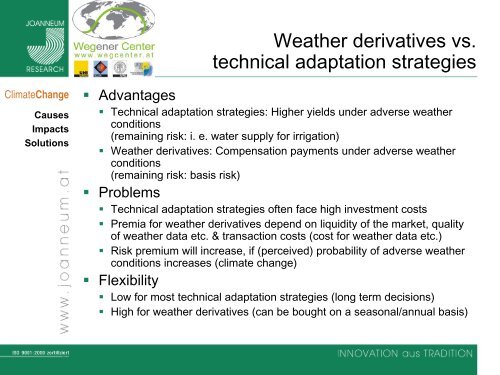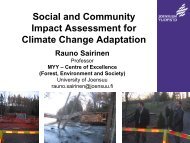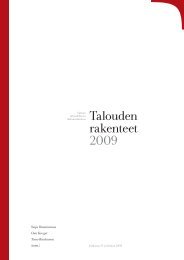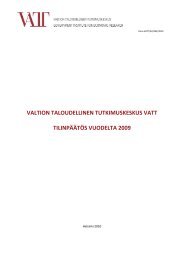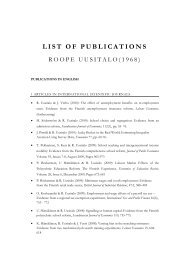Adaptation to flood and drought risk in Austria - VATT
Adaptation to flood and drought risk in Austria - VATT
Adaptation to flood and drought risk in Austria - VATT
You also want an ePaper? Increase the reach of your titles
YUMPU automatically turns print PDFs into web optimized ePapers that Google loves.
Weather derivatives vs.<br />
technical adaptation strategies<br />
ClimateChange<br />
Causes<br />
Impacts<br />
Solutions<br />
• Advantages<br />
• Technical adaptation strategies: Higher yields under adverse weather<br />
conditions<br />
(rema<strong>in</strong><strong>in</strong>g <strong>risk</strong>: i. e. water supply for irrigation)<br />
• Weather derivatives: Compensation payments under adverse weather<br />
conditions<br />
(rema<strong>in</strong><strong>in</strong>g <strong>risk</strong>: basis <strong>risk</strong>)<br />
• Problems<br />
• Technical adaptation strategies often face high <strong>in</strong>vestment costs<br />
• Premia for weather derivatives depend on liquidity of the market, quality<br />
of weather data etc. & transaction costs (cost for weather data etc.)<br />
• Risk premium will <strong>in</strong>crease, if (perceived) probability of adverse weather<br />
conditions <strong>in</strong>creases (climate change)<br />
• Flexibility<br />
• Low for most technical adaptation strategies (long term decisions)<br />
• High for weather derivatives (can be bought on a seasonal/annual basis)<br />
24


